Navratri is likely one of the most-awaited and broadly celebrated festivals in India. Though Navratri comes 4 instances in a year. Sharada Navratri in autumn is celebrated with utmost devotion and Passion. Listed below are the 9 forms of Goddess Durga:
This year(2020), Navratri begins on 17 October and the ninth day will likely be on 25 October.
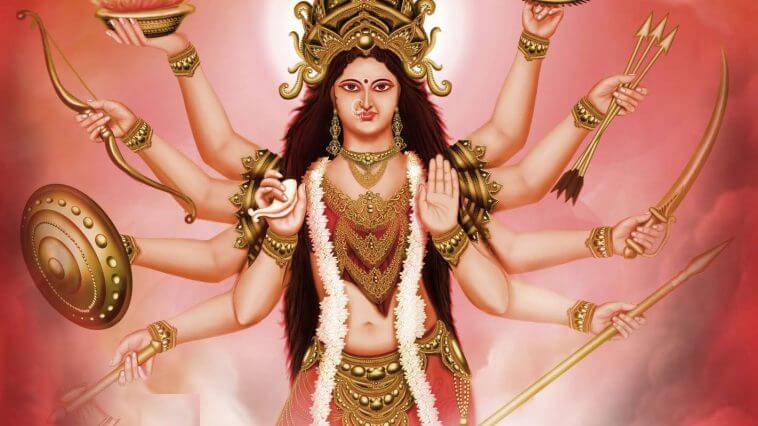
Goddess Durga worshipped through these 9 days. Navratri holds tremendous significance in the Hindu religion. Every day is devoted to worshipping a manifestation of the Goddess.
There are 9 forms of Goddess Durga that are worshiped with 9 different prasads or bhog.
1. Goddess Shailputri/(Maa Parvati)
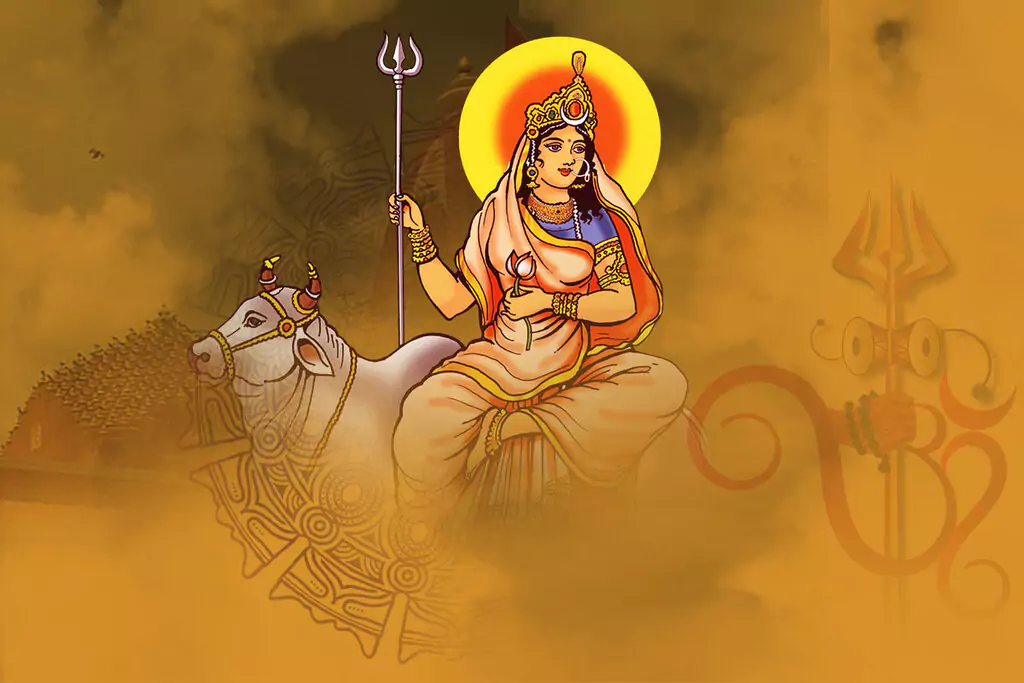
Goddess Shailputri is the first manifestation of Goddess Durga. She holds a Trishul in one hand and a lotus in other and rides a bull known as Nandi. Goddess Parvati was born as the daughter of Himalaya and in Sanskrit, Shail means the mountain, thus she is named Shailputri.
2. Goddess Brahmacharini
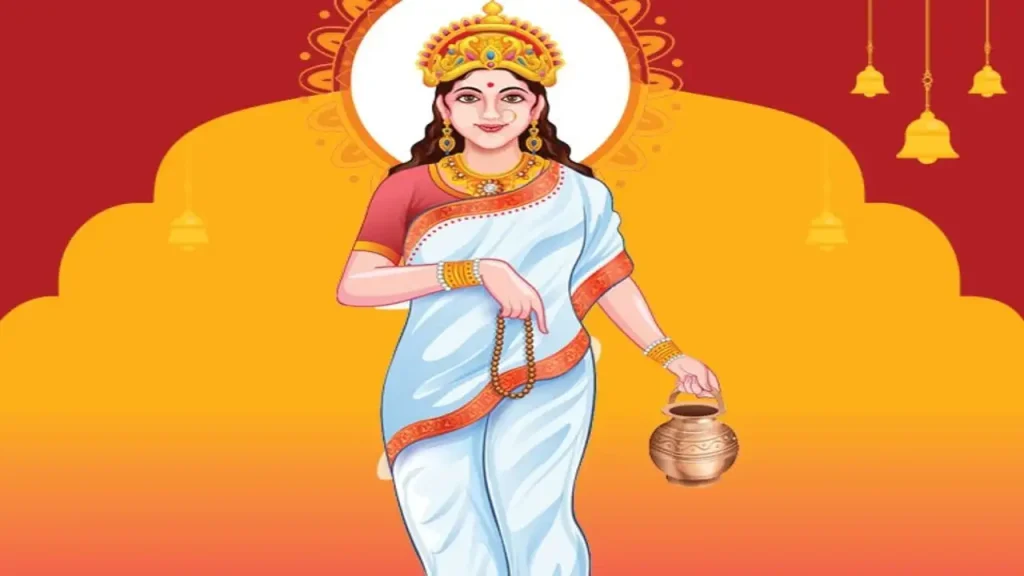
The second day of Navratri devoted to Goddess Brahmacharini. The goddess holds a rudraksh mala in one hand and a sacred Kamandalu in other. This meditative form of the goddess represents Goddess Parvati during her period of deep and focused meditation to approach Shiva.
3. Goddess Chandraghanta
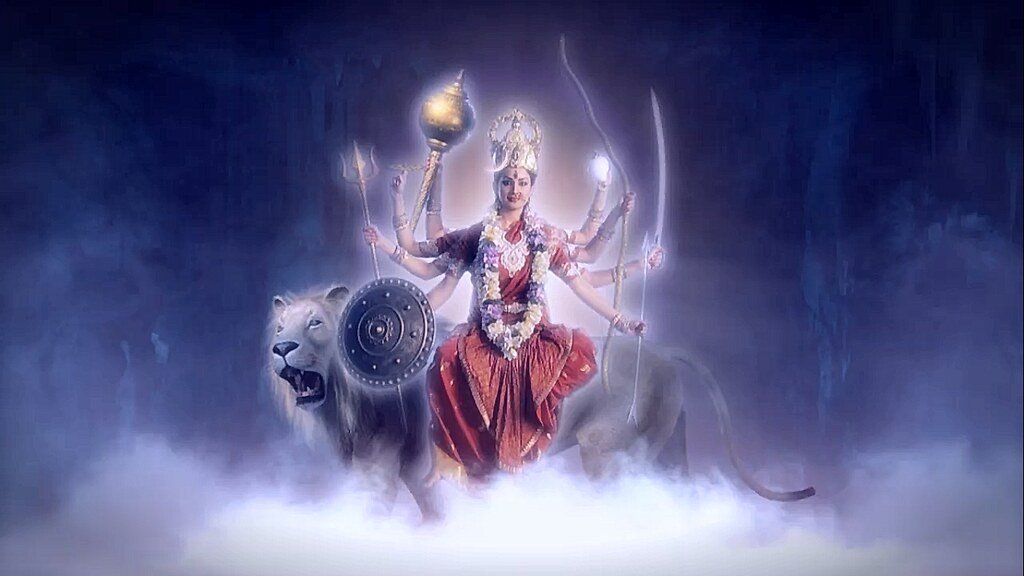
The third day of Navratri is of Goddess Chandraghanta. She is a 10-armed goddess with a crescent moon on her forehead, which gives her the identify Chandraghanta.
4. Goddess Kushmanda
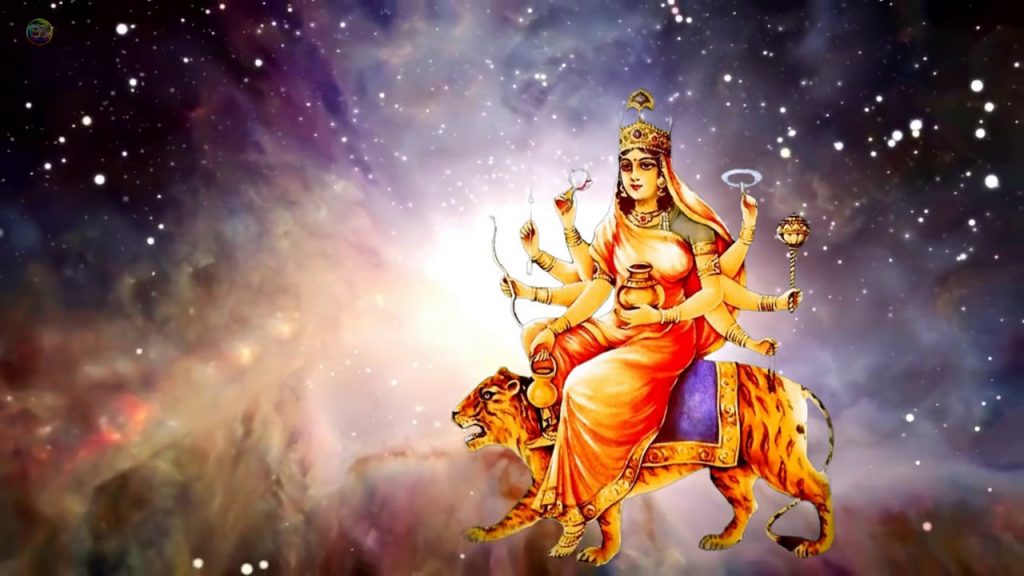
Chaturthi or the fourth day of Navratri is of Devi Kushmanda. The identify Kushmanda derived from three words – ‘Ku’ (little), ‘Ushma’ (warmth or energy) and ‘Amnda’ (Cosmic egg), which means the creator of the universe.
She has the power and capability to live inside the sun and has the glow and radiance of her body as luminous as that of the sun. It’s believed that Goddess Kushmanda provides direction and energy to the sun and popularly known as Ashtabhuja Devi. She bestows siddhis and niddhis that are located in her japa mala. She like red coloured flowers.
5. Goddess Skandmata
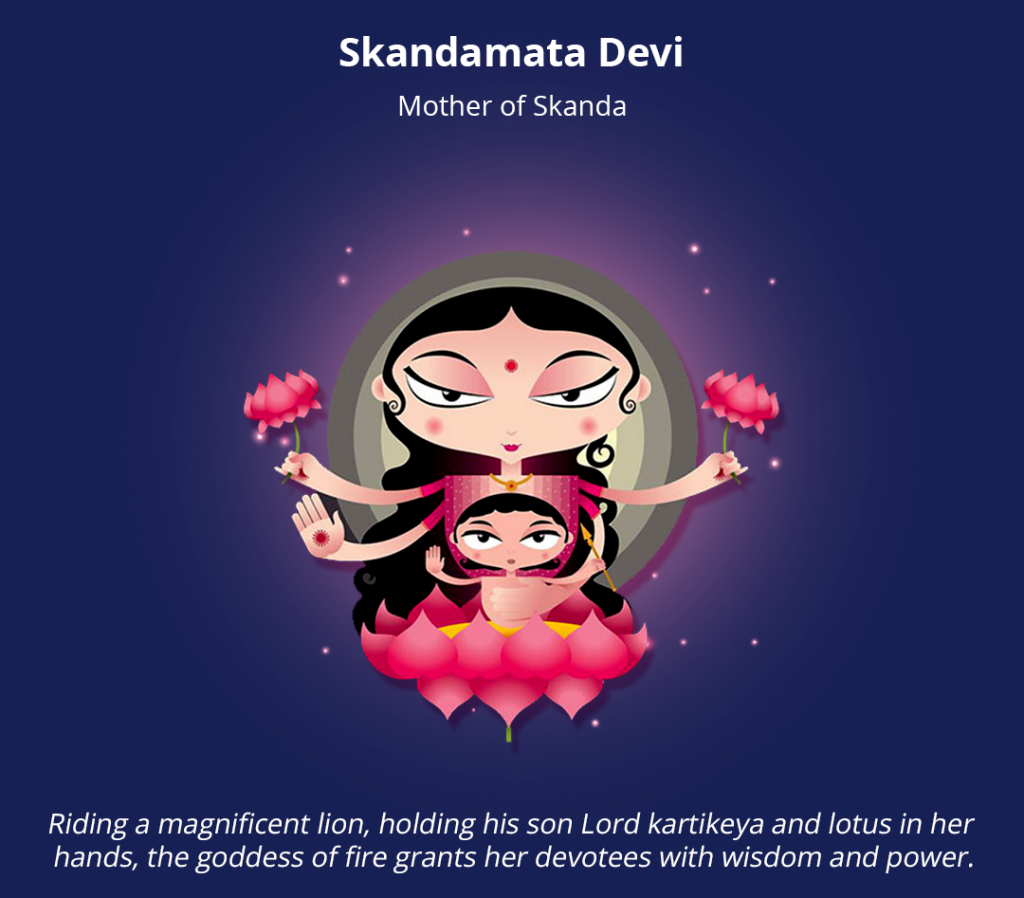
Goddess Skandmata who’s worshipped on the fifth day is also known as Panchami. Skandmata is a four-armed deity, who carries a lotus in two of her arms with a sacred Kamandalu and a bell in the other two. She also carries a little Kartikay on her lap and because of this Kartikay also known as Skanda.
6. Goddess Katyayani
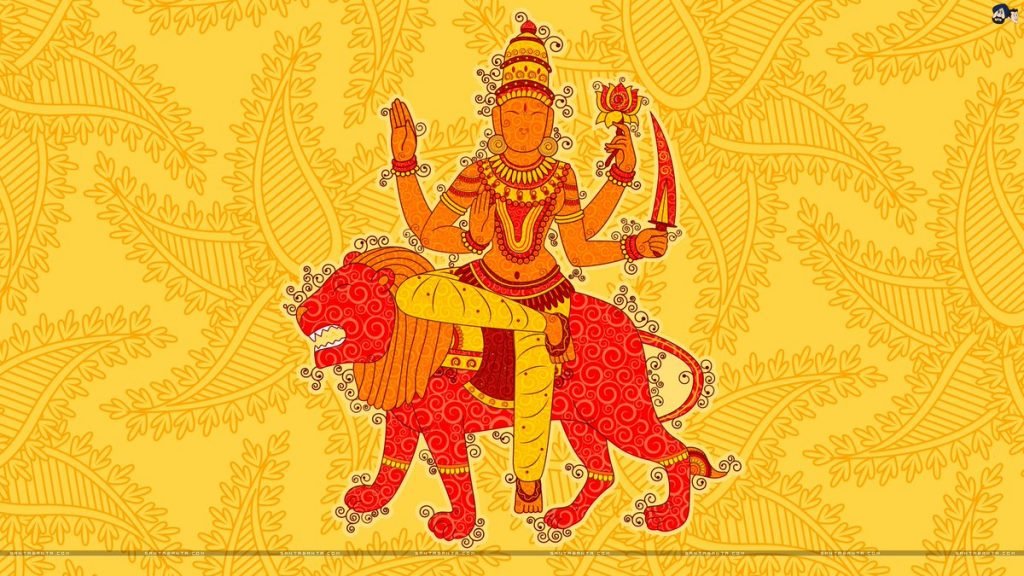
The sixth day of Navratri devoted to Goddess Katyayani, who’s a form of Shakti. Also called the warrior goddess, Katyayani considered as one of the most violent forms of Goddess Parvati. She has 4 arms and carrying a sword. She is the daughter of Sage Katyayan and rides a lion.
7. Goddess Kaalratri
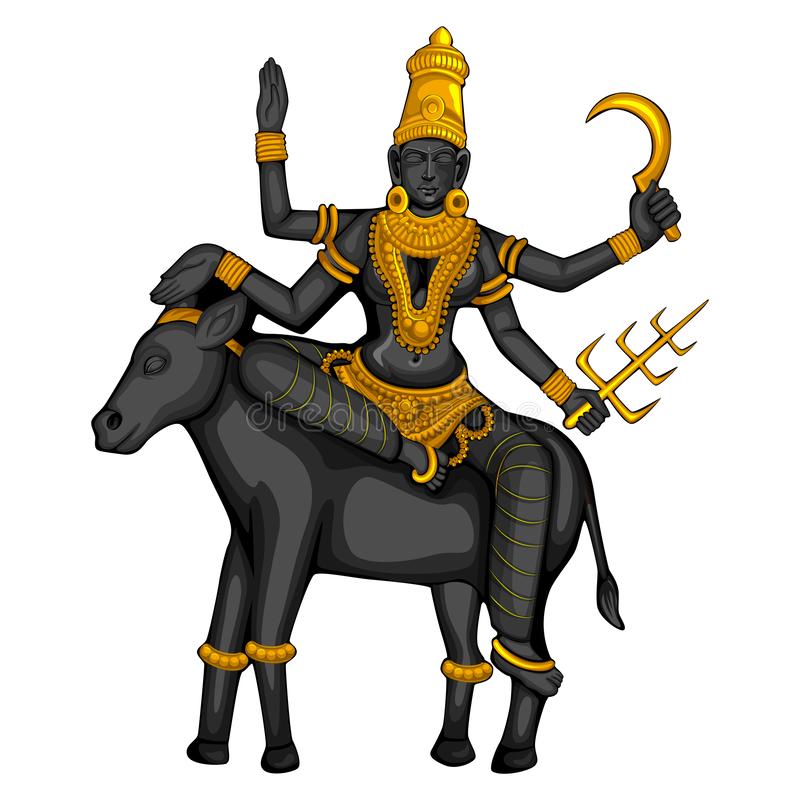
Saptami or the seventh day of Navratri is of Goddess Kaalratri. As per history she sacrificed her skin color and embraced a darkish complexion to kill demons. She is a four-armed deity who rides a donkey, carries a sword, a trident, and a noose. Her third eye on her forehead believed to contain the entire universe.
8. Goddess Mahagauri
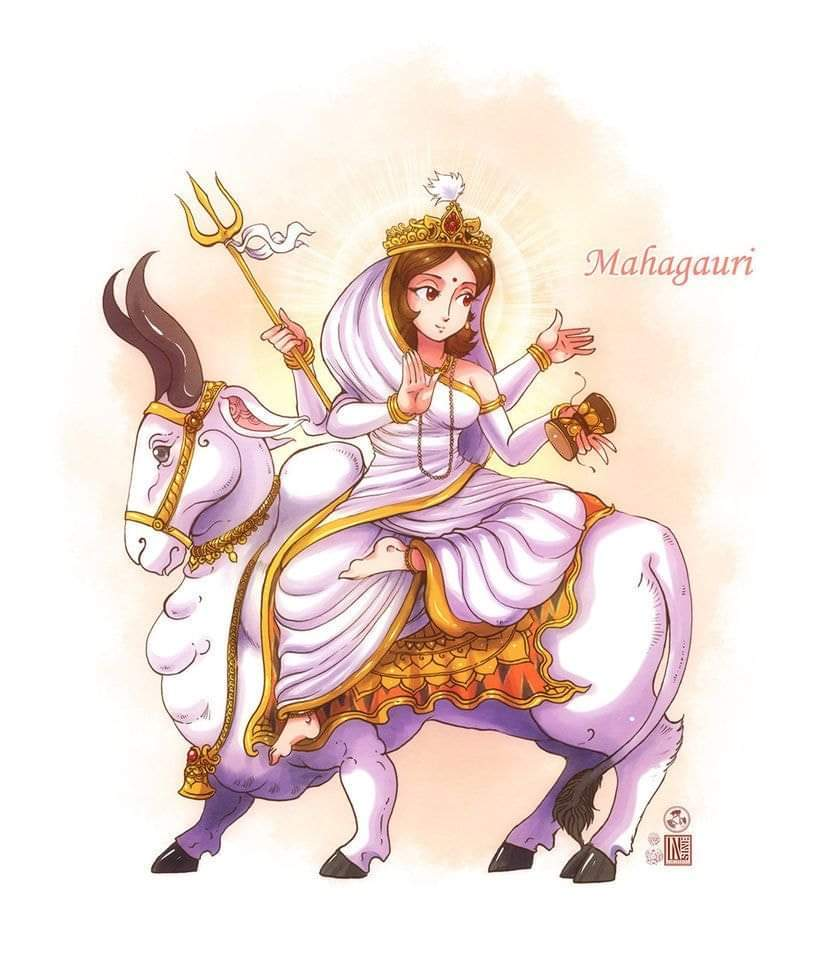
Durga Asthami or the eight-day of Navratri dedicated to Goddess Mahagauri. She is a four-armed deity who rides on a bull or a white elephant. She carries a Trishul and a damru in her hands.
9. Goddess Siddhidatri
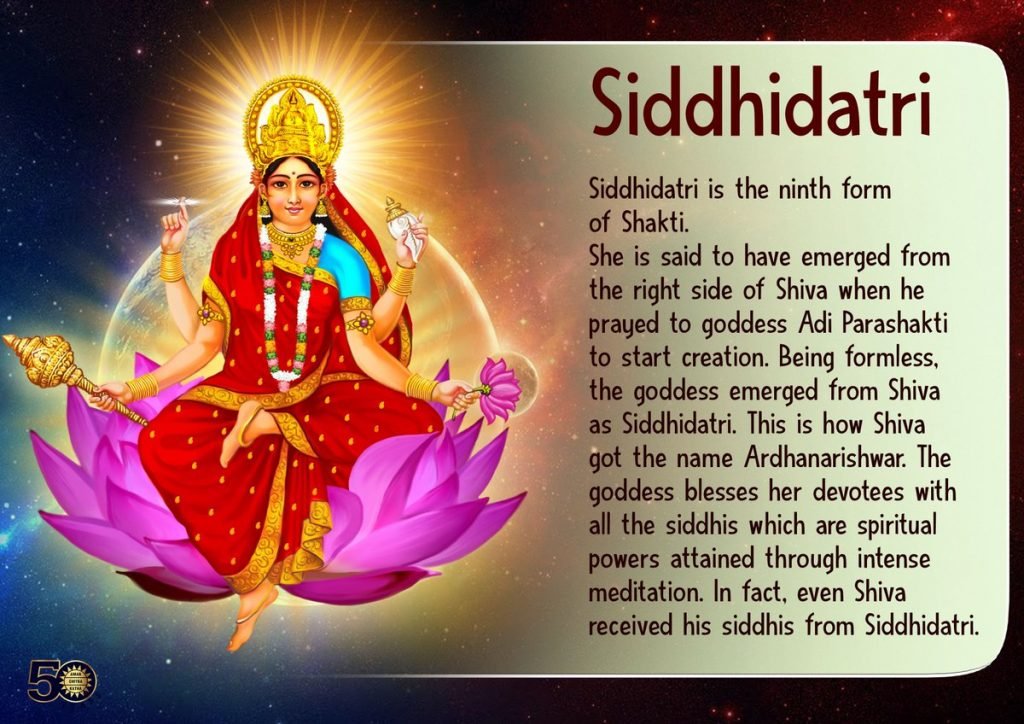
The ninth and final day of Navratri dedicated to Goddess Siddhidhatri. She appears as a serene four-armed deity seated on a lotus, holding a mace, a discus, a book, and a lotus flower in her hands. This form of Goddess Durga signifies perfection.
Also Read:
- 10 Most Famous Female Entrepreneurs in India
- How Powerful Is Nandi Bull – Symbol of Strength and Devotion
- Top 10 Strongest People in the Satya Yuga

